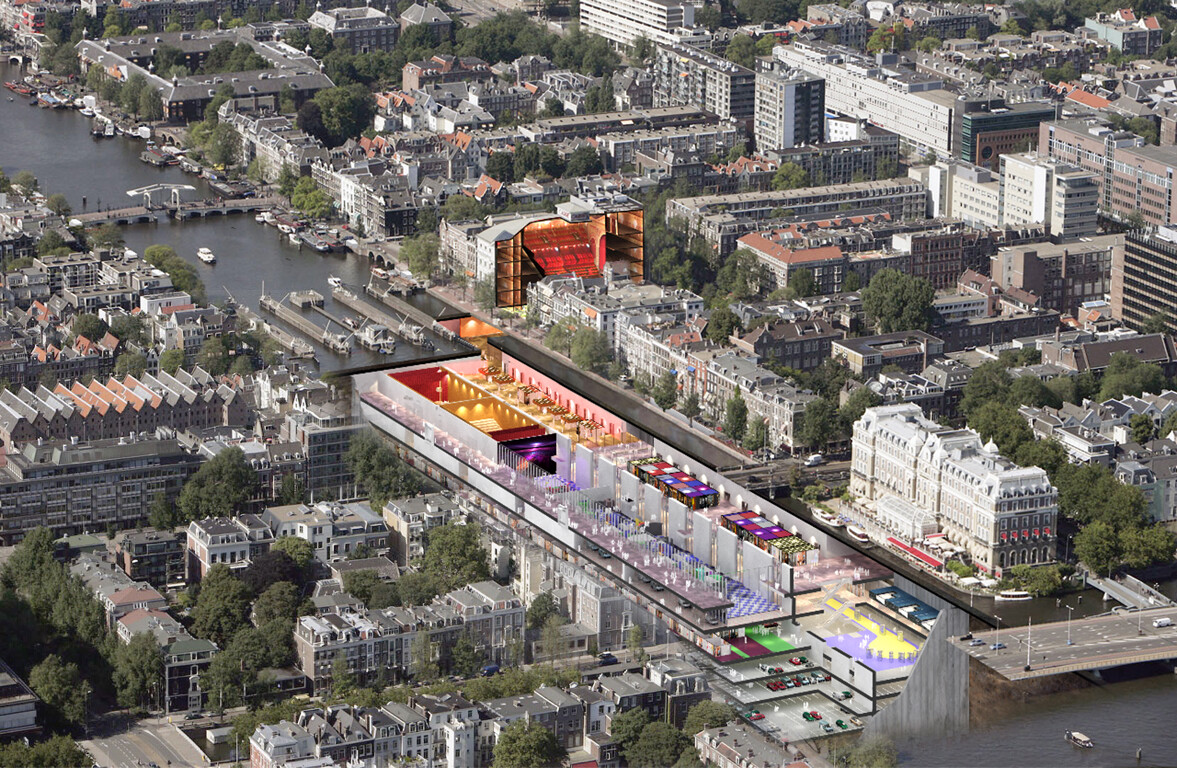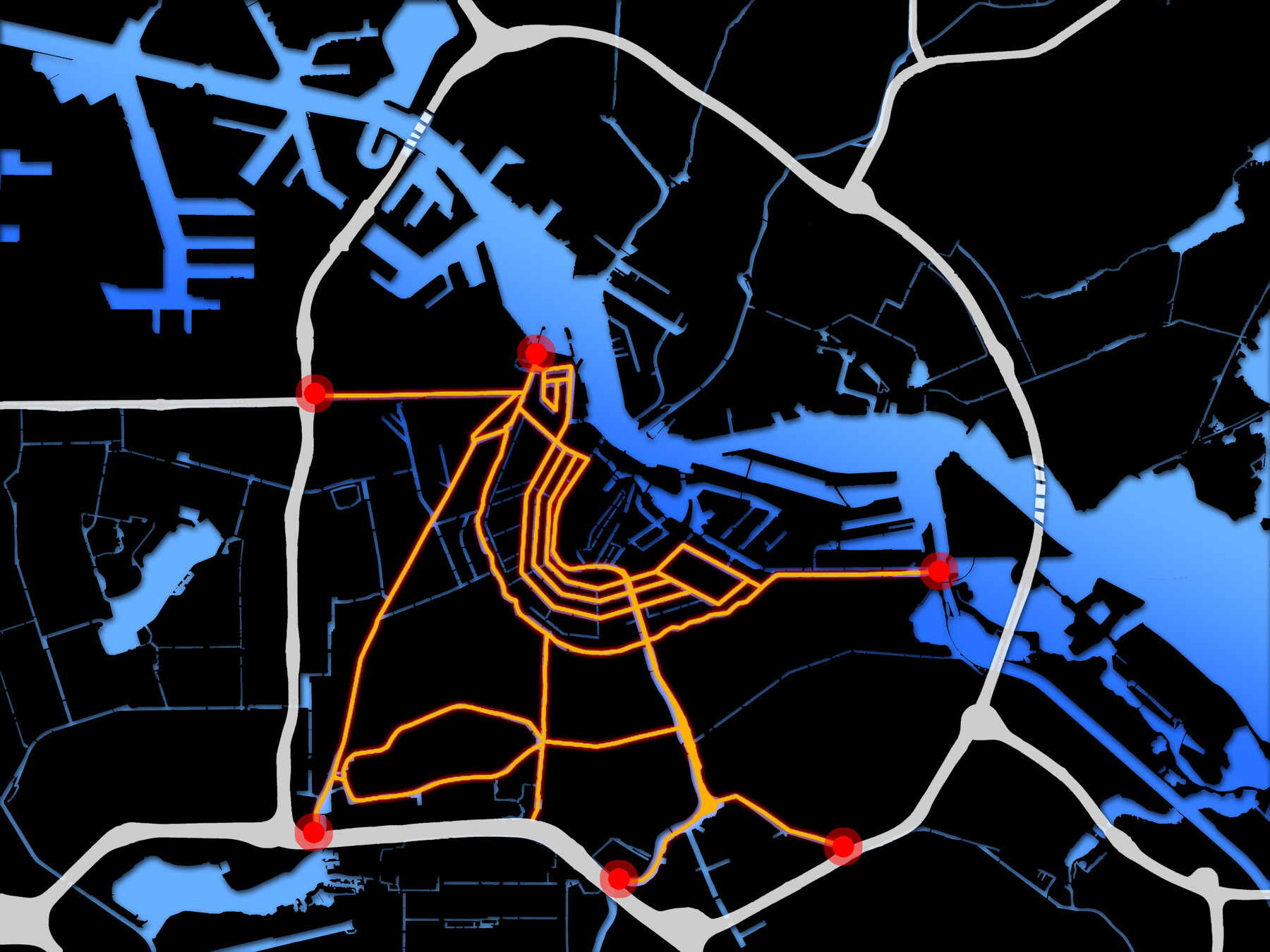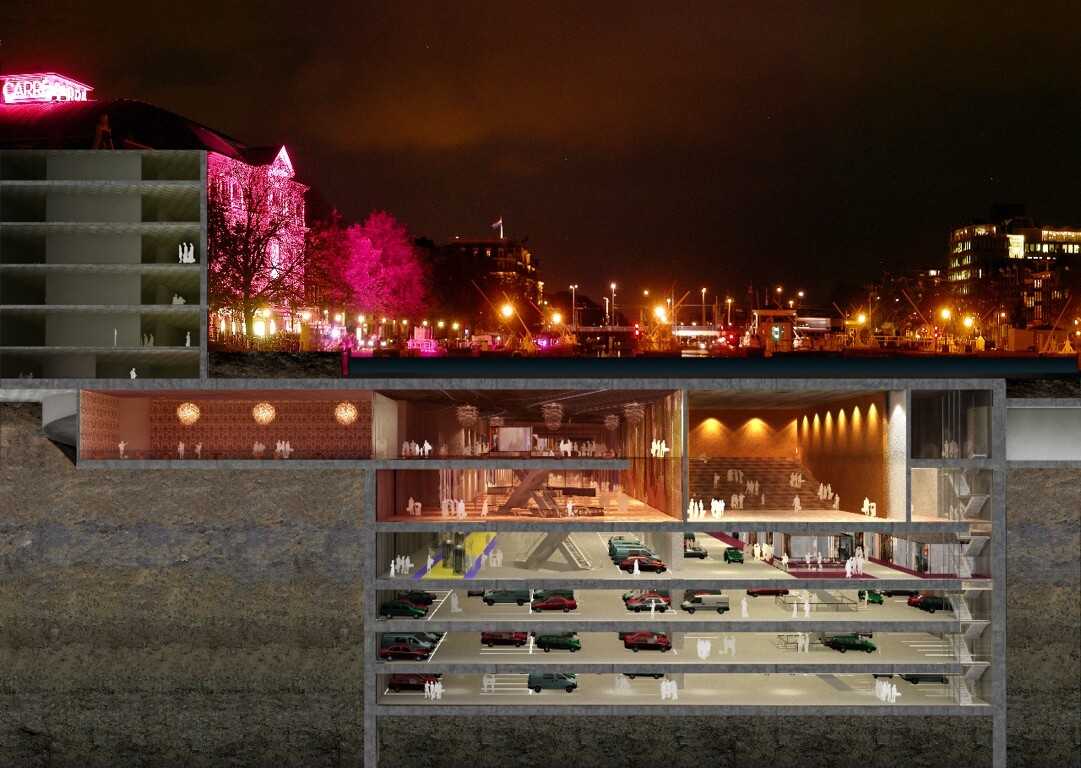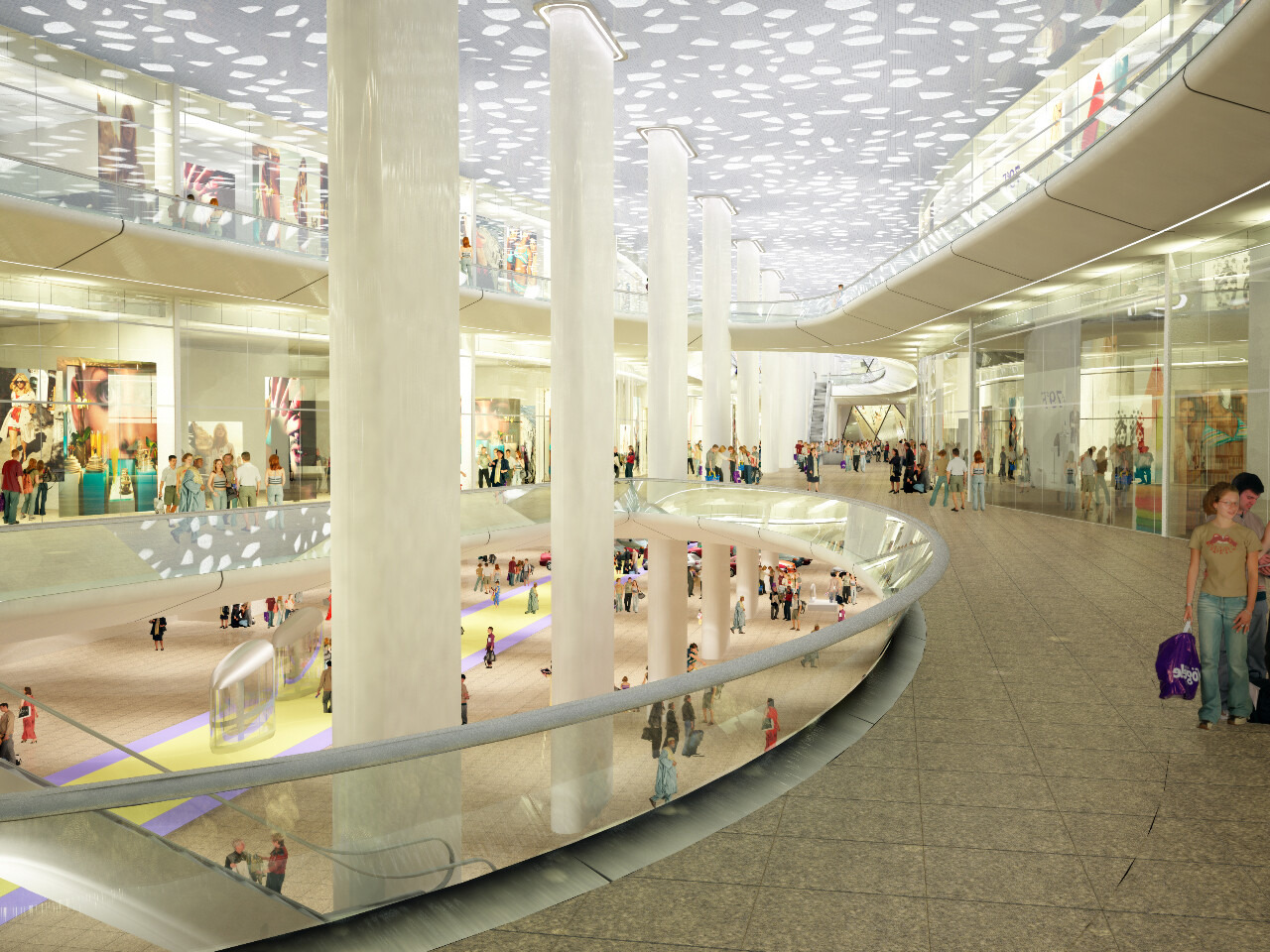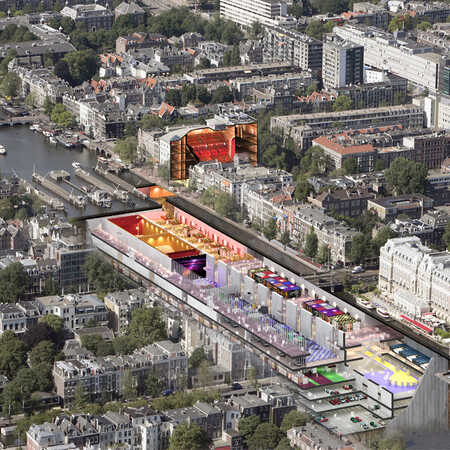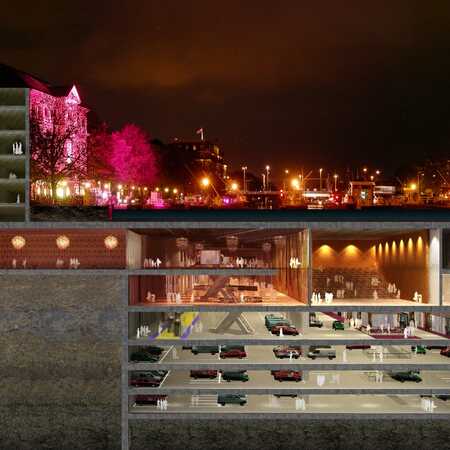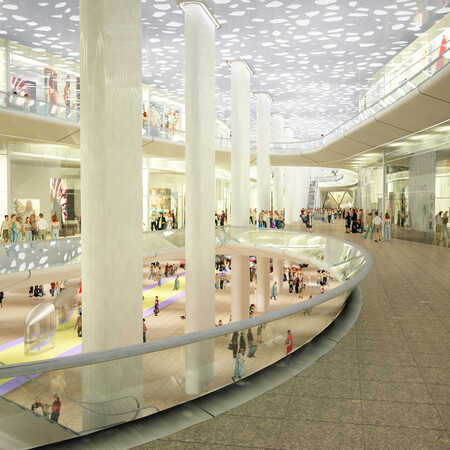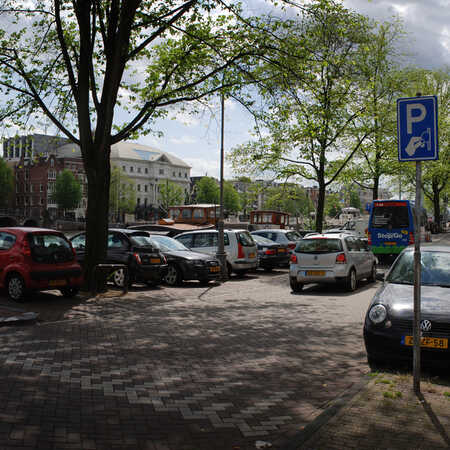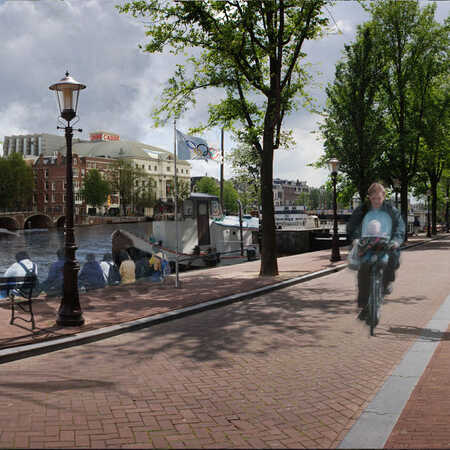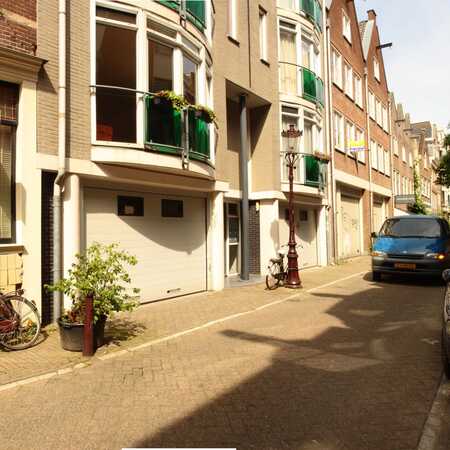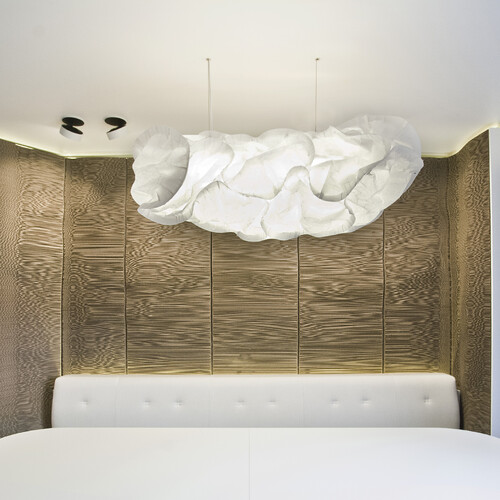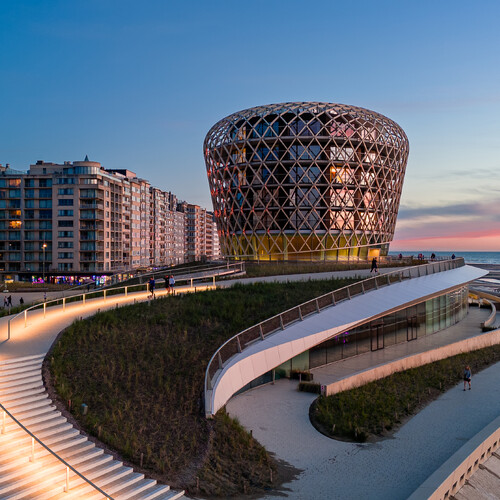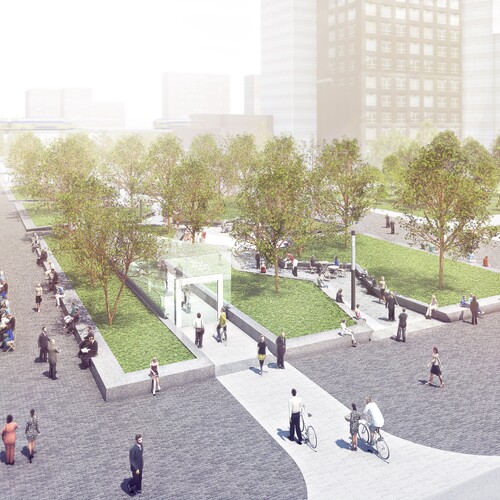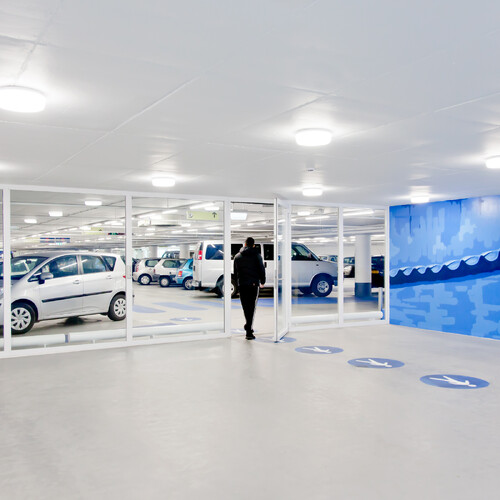The large scale of the underground development of AMFORA Amstel necessitates careful consideration of the spatial experience of its users. Poorly organized, dimly lit and low-ceilinged spaces underground have a disagreeable effect. Nobody wants to feel they have ended up in an underground labyrinth. So in the design everything is focused on clear views and orientation. Dead-end spaces are avoided, while openings offer a view of several levels and consolidate visitors’ natural sense of direction. The choice of lighting, colours and materials is even more important than in a building above ground. High-quality materials, such as stone and stainless steel, and the use of green contribute to a pleasant feeling for anyone using the six underground levels. Above-ground landmarks such as bridges and famous buildings are used to help people orientate underground.
AMFORA Amstel contributes to a greener and healthier city with more open space that is comfortable and lively, without compromising accessibility or provisioning.
